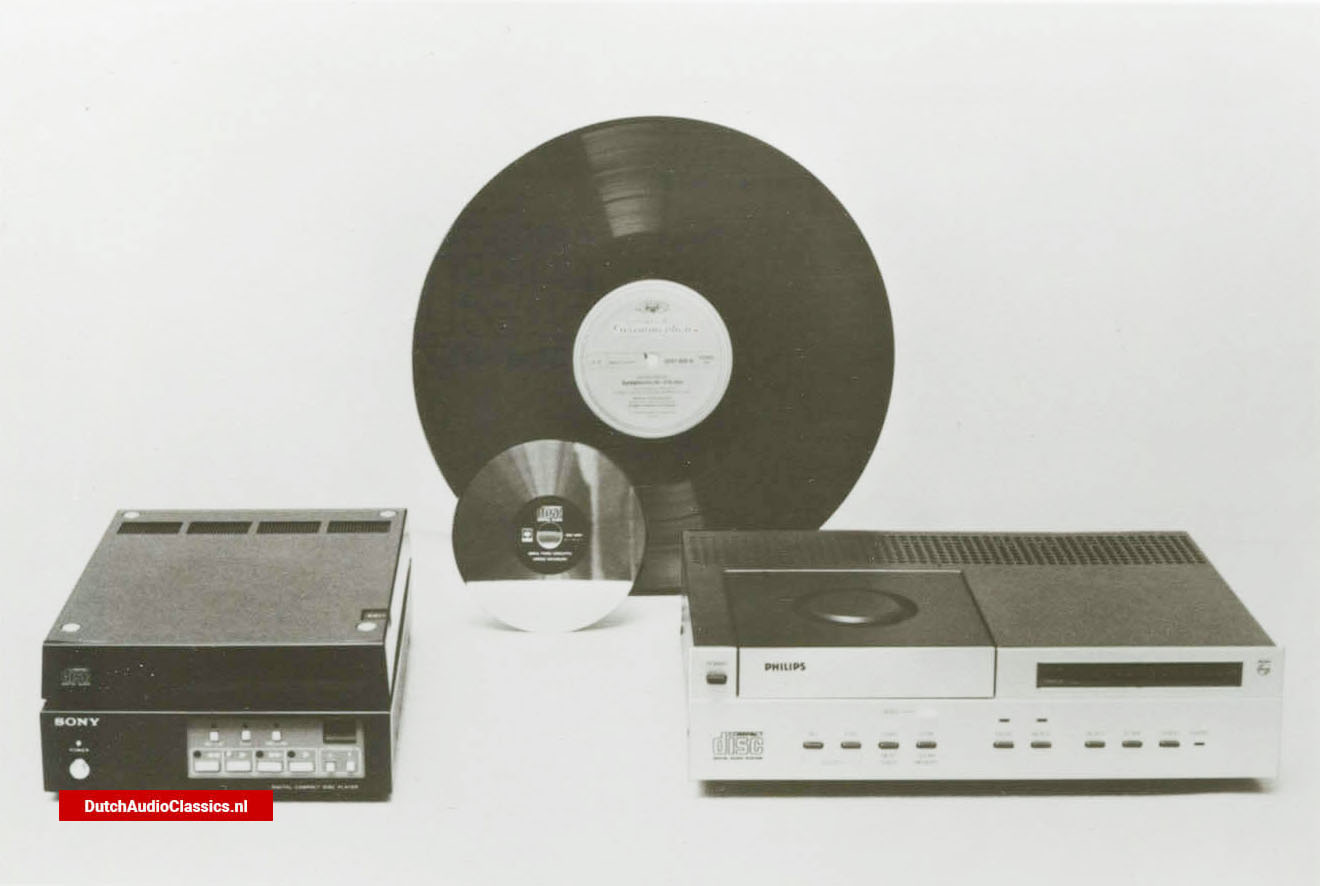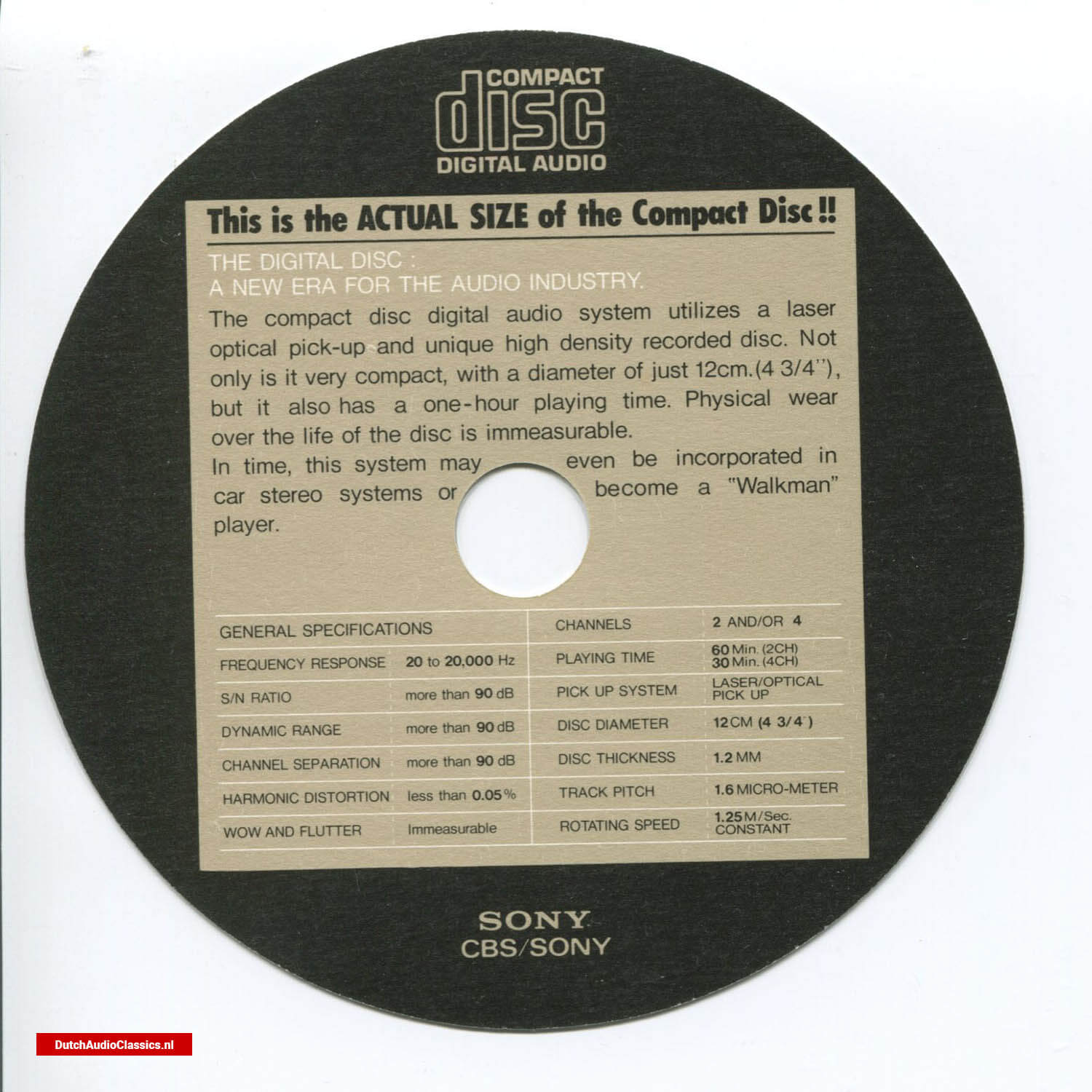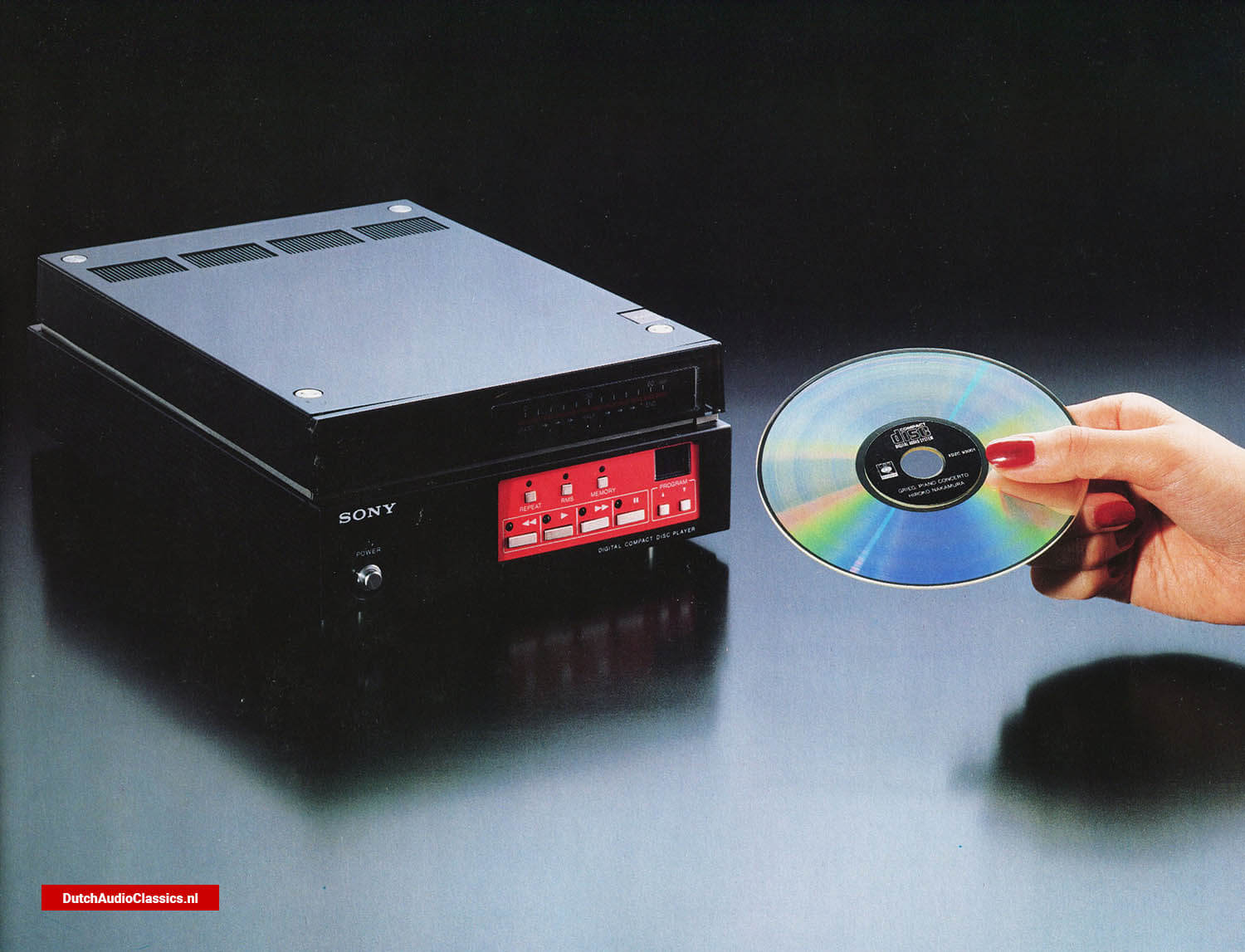It must have been a wonderful experience for the stewardesses. In the first class section a number of seats had been removed to make room for the vast items of equipment. On their way to Japan, the Philips men were not going to take their eyes off their invention, not even for a moment. Two prototypes of the CD player, including two cubic meters of electronics, traveled with the party.
Philips collaboration with Sony

In March 1979, one week after the press conference in which the CD player had been shown to the world, a large Philips delegation set off for Japan. The Japanese Ministry of Industry and Technology (MITI) had decided to convene a conference in which the industry would come together and decide upon a standard for the audio disc. In order to increase the opportunities for the Philips system, it seemed a good idea to collaborate with a Japanese partner. That is why a tight schedule of demonstrations was planned at all leading Japanese electronics companies.
The development of the CD took a decisive turn just before the return journey. The demonstrations in Japan had gone extremely well. As Joop van Tilburg, head of the audio division, was packing his suitcases, he received a telephone call from the president of Sony, Akio Morita. The offer of joint further development was accepted. In the months that followed, Philips and Sony engineers flew backwards and forwards in turn to see each other. Their aim was to agree upon a joint standard for the CD. Both companies would then be able to develop their own products in accordance with this standard.
One crucial matter that the two teams discussed was the digital coding of the sound. Both Philips and Sony had experience of this and their expertise proved to be extremely complementary. An important point that was discussed was the level of precision with which analog signals were to be converted to digital codes. To how many digits behind the decimal point would the variations in voltage have to be recorded? The more precise the better, because the level of noise is determined by the number of digits (bits) in the signals. An additional bit immediately leads to a significant reduction in the noise. It was thus a question of weighing up the quality against the cost. The first Philips prototypes were based on 14-bit figures. Philips had already started developing chips that would convert the 14 bits into analog signals. Sony wanted 16 bits — much better, but considerably more expensive. Philips engineers therefore devised a way to read CDs with 16-bit figures via their 14-bit chips. This brought both parties close together on this point.

It is not only the number of bits with which the variations in voltage are recorded that is of importance for the quality, because sometimes bits are read incorrectly, for example as a result of an error in the surface of the disc. This gives an incorrect sound which cannot be masked. It is annoying in pieces of music, but it would be fatal when recording computer files. Incorrect bits render a computer program useless. Application in computers was still a long way off, but even then they were already starting to think how the CD could be used for the computer. It was therefore important to agree upon a watertight technique for detecting errors.
The only effective way of detecting errors is to record additional (redundant) information. This is also done with credit card numbers, for example. The last figure is actually superfluous, but it serves as a check. It is chosen in such a manner that addition of the figures in a specific way gives an exact multiple of 10. It is therefore possible to use this additional figure to check whether or not any errors have been made. And if one figure has become illegible, it can be reconstructed using this check method. Sony already had experience in the use of redundant information in professional digital recording equipment. This is why the error-correcting coding that was ultimately agreed upon bears primarily the mark of Sony’s know-how.
The Cross-Interleaved Reed-Solomon Code (CIRC) that was ultimately decided upon has a special feature. With relatively little processing during the reproduction, this code enables limited error correction to be applied. This made it possible to produce cheap CD players with little electronics and an acceptable quality. More elaborate electronics can be used, however, to produce a higher level of quality for more expensive players.
By now there was therefore an effective process for digitization of the analog sound signal. First of all, the microphone voltage is converted into ones and zeros. Following this, additional ones and zeros are added which make it possible to correct errors and illegible bits. However, a third step is required in order to put the ones and zeros onto the CD. A technique had to be agreed upon for translating the ones and zeros into a pattern of pits. As a result of its experience with the video disc, Philips had become skilled at developing the ideal pit pattern on the disc. This was why it was agreed to use the technique developed by Philips.

The simplest way of recording bits on the disc is to make a pit for every one (and no pit for every zero). The disadvantage is however that this requires a large surface area. The laser beam is, after all, not entirely sharp. That is why a margin has to be left around each pit before the next pit can be made, otherwise the lens is not able to distinguish between the point at which one pit ends and the next pit begins. Philips has therefore developed a technique to make every pit contain more than one bit of information. This is achieved by not making all of the pits the same length. A short pit has a different meaning than a long pit.
A fixed length is reserved on the disc for every series of eight bits in which two or three pits are made. What size these pits need to be is derived from a conversion table. The conversion table gives a different pit pattern for every one of the 256 different series of eight bits. These 256 patterns have been selected with care. They resemble each other as little as possible. Furthermore, any patterns that could cause an optical fault have been avoided. This technique is called Eight-to-Fourteen-Modulation (EFM), because in the area that is reserved for each series of 8 bits there are exactly 14 places at which a pit can commence.
Philips and Sony therefore each contributed some of their own technology to enable the sound signal to be converted into a pit pattern. There were, however, yet more technical choices that had to be made. How big should a CD be? What sort of laser should be used in it? And how should the laser shine on the pits?